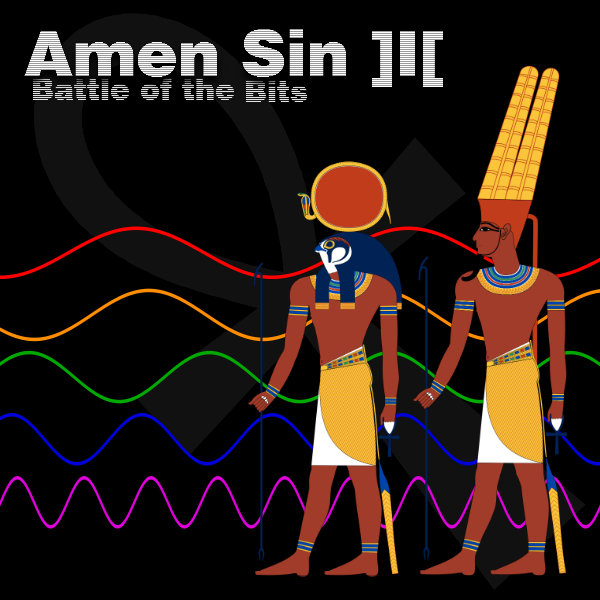Recently wrote an email to a buddy whose album I'm mixing, describing some of the latest thoughts and concepts with my production experiments. Thought I'd post it here, for those interested, since I spoke a bit about some things earlier. Although this stuff I'm about to paste from the email is more about taking advantage of digital dynamic range while harnessing analog characteristics from dynamic convolution libraries via Nebula(as opposed the reamping experiments I used on this song.)
You'll most likely hear these techniques used on the next big all gear battle. Anyway, here it is:
""have a few brain updates for you!
I mentioned earlier in chat that I'll have more audio samples for you to listen to, but I've decided against that. A lot of my approaches have been very mechanical with all of this 'tape' business due to me not fully understanding the historical and technical aspects of the medium as well as the complicated nature of using Nebula technology correctly, but my frustrations are always bringing a lot of important realizations to the surface.
Ok, practical talk, we need to establish a dynamic performance within the songs; thinking about which sections should be louder than others is the essential piece of the meaty mix puzzle. And not just 'percieved' loudness that compression offers but real dynamic range. This essay:
http://www.cdmasteringservices.com/dynamicrange.htm summarizes things very elegantly. I'll jump on those initial edits we discussed and get the recordings solid and squared away first, but this is the next step. Basically, thinking about how you'd perform these live. We can capture that spirit while keeping the integrity of a solid record.
And back to conceptual drivel,
My goal is to add character to these recordings. Not to be confused with adding character to the performance or music of course, that's all you and it has already been composed and recorded. But here lies the problem with digital recordings, there really isn't much character available as a recording medium. It's pristine and perfect with incredible dynamic range and that old 'character' we like about older records comes from the color which analog gear adds to the original recorded signal. Digital offers a much more superior dynamic range than tape or vinyl. But to define what this missing character actually is...
This analog character comes from what happens within the gear when it is pushed. Many extremely intricate alterations are happening to the signal all at once: slightly fluctuating frequency response, fluctuating levels of saturation/slight distortion and fluctuating compression, all depending on how much of the signal is being fed to the device at any given time. The signal is breathing essentially and I think this behavior resonates with us as living human beings; it is desirable effect in many cases.
This kind of breathing, dynamic behavior cannot be achieved faithfully with simply adding slight distortion to a track or a little compression. I noticed that on the ProTools sessions, there were distortion plugins added to the vocals and the drums. This is interesting and relevant to note because it shows that adding a little distortion is common practice. Again, it's a desirable effect, but having a track constantly under the influence of a distortion plugin at all times is NOT the desirable breathing characteristic of older recordings and analog equipment, which is what influenced this distortion plugin practice in the first place. But this is where that Nebula technology comes into the picture.
Nebula reacts dynamically to the audio being fed to it, like analog equipment. The 'tape libraries' I keep mentioning are basically samples taken, measured from real tape machines at specific settings that feed into Nebula, telling it how to process the audio basically. This is important because at low levels the audio is clean, but at higher levels it begins to tastefully distort and compress. No other present technology does this as accurately as Nebula. And I've spent almost three years trying to bridge the gap between understanding the historical context of recording mediums, recording practices and the technical side of using the Nebula technology correctly.
So this great sea of conceptual information is finally starting to solidify into a practical concept that I'm feeling quite confident with.
The key to adding true musical character to the record comes down to approaching the songs musically; there needs to be quiet sections, medium, loud and super fucking loud...dynamics! I can achieve this by mixing dynamically without relying on compression. With proper execution, Nebula will faithfully replicate those analog characteristics, fluctuating in saturation and compression, hand in hand with the dynamics of the music.
My fumbling production tactics haven't always been presented very well since I've been experimenting and mostly failing for a long time. But these were always technical issues that presented themselves due to my ignorance and inability to fully define and understand, in detail, what I was trying to accomplish. I feel that anyone can grab some recordings and mix them in a DAW, but in the end there is still something missing. A few long research sessions in past weeks have produced some findings and realizations that are finally starting to fill in the gaps, both conceptually and technically.
So anyway, just wanting to organize my thoughts and present the latest story of this...ongoing project of sorts to you and explain why I've been fumbling about most of the time with getting this record mixed. It's not exactly easy, but I think it is possible to combine the convenience and superior dynamic range of digital audio with the warm, vibrant characteristics of analog recording equipment and tape...and I'm passionate about doing it right.
Laterlater,""








